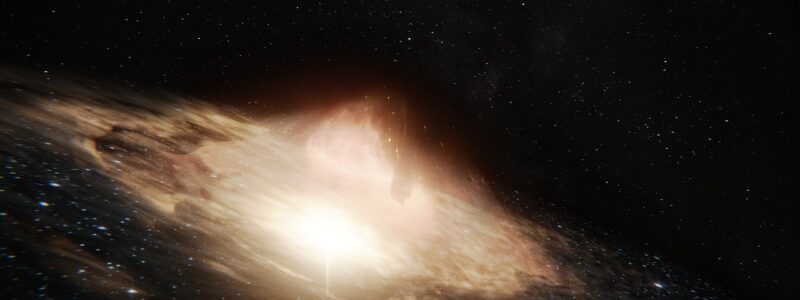The Multiverse

Cross section of the quintic Calabi-Yau manifold – By derivative work:Polytope24; / Calabi yau.jpg: Jbourjai (using Mathematica output) – This file was derived from: Calabi yau.jpg, Public Domain, Link
The Multiverse
No science concept has caught the public imagination more than that of a multiverse. In the popular imagination, it is the theory that there are other universes present simultaneously with our own, with people resembling us acting out their lives along with a completely different storyline. There is an infinite number of these stories producing an infinite number of outcomes.
The multiverse has served as the background for a countless number of science fiction books and story lines of movies.
This concept has also caught on with the cosmology community as well for somewhat different reasons. The idea of a finite beginning to the universe has too many theological consequences as well as difficulties with the burgeoning number of fine-tuning examples making the creation of our universe nearly impossible. However, if you have an infinite number of tries, conceptually at least anything becomes possible.
Bubbles!

Multiple Universes – Image by Gerd Altmann from Pixabay
It all comes down to bubbles. When the universe was very young, some cosmologists speculate that there was a space-time “foam” which developed. With the expansion of the proto-universe during its inflationary period, these tiny space-time bubbles budded off into an infinite number of baby universes with each baby assuming distinct physical laws and constants different from each other. There could be (somehow) an infinite number of universes which emerged from this quantum space-time foam with every conceivable value of the constants of physics.
An infinite number of universes each with different physical values and constants would eventually include our particular universe. Even though it would be fantastically difficult for this universe to come into existence, when you have an infinite number of tries, anything becomes possible.
This highly stylized construct utilizing an infinite number of multiverses seeks to dethrone God as the creator; rather, probability statistics assumes that role.
The atheistic version of the multiverse utilizes this multiple of infinities of universes to explain away all the cosmic fine-tuning necessary to produce our particular universe that can support intelligent life. Most universes made this way with various physical constants and laws of physics will not support any life as there would be no matter, no atoms, and no chemistry.
The theistic version of the universe utilized by some theologians assumes God creates an infinite number of universes to produce one universe that best supports our intelligent life.
Problems with the Multiverse Concept
The atheistic multiverse explained above where there is an infinite number of universes where there is every possible physical law and constant somewhere. With an infinite number of possibilities, there has to be one universe (like ours) where there is the right combination of physical laws and constants to provide for life. In fact, there will be an infinite number of universes like ours meaning our universe rather ordinary in the multiverse system.
There are several scientific and philosophical reasons why the multiverse concept seems more like a construct than real science.
The multiverse is a concept borne of desperation. The multiverse was not seriously proposed until there was no other choice. For centuries atheists have argued design was not really a feature of the universe but only an illusion. For example, Richard Dawkins states in his book The Blind Watchmaker that
Natural selection is the blind watchmaker, blind because it does not see ahead, does not plan consequences, has no purpose in view. Yet the living results of natural selection overwhelmingly impress us with the illusion of design and planning.
Dawkins admits that nature overwhelmingly seems to be designed and planned, but he asserts this impression is only an illusion. The impression of design throughout the universe makes some atheistic scientists come to a similar conclusion but with an open mind to alternatives other than blind chance. For example, Paul Davies concluded in his book The Cosmic Blueprint,
[There] is for me powerful evidence that there is ‘something going on’ behind it all. The impression of design is overwhelming.
Atheists only proposed the possibility of a multiverse when the appearance of design became too overwhelming to ignore.
The multiverse actually explains too much. The concept of the multiverse may seem to be an adequate philosophical explanation for the existence of our universe if not really a scientific one. So what is the problem?
One problem is that the infinite multiverse theory not only explains away God’s design – it also explains away human design. A thought experiment offered by Hugh Ross might further illustrate problems associated with this concept. If there is an infinite number of universes there is also an infinite number of planets like our earth with an infinite number of white birch trees which shed pieces of bark the same size as an 8.5 by 11-inch sheets of paper. There will actually be an infinite number of these sized sheets of bark which fall upon the soil and become soiled with marking resembling all the research papers ever published.
As theoretical physicist Paul Steinhardt notes, the multiverse provides for all possible outcomes of everything. There is nothing that such a hypothesis could not explain. Of course, if a hypothesis can explain everything, then, in reality, it explains nothing.
For example, we might conclude using this reasoning that the multiverse – rather than scientists – is responsible for all the research papers published in the scientific literature. The multiverse with an infinite number of scientists all studying an infinite number of topics would eventually produce an infinite number of scientific papers which would include all the research papers ever published.
You cannot permit human design while not permitting God’s design with a consistent application of the multiverse principle.
Design evidence is seen on every size scale. One of the results of the vast increase in knowledge during the past one-hundred years is the pervasive evidence for design everywhere from the quantum scale to the entire universe. There is apparent design everywhere you look at every size scale. As Hugh Ross notes,
Whether in our supercluster of galaxies, our local cluster of galaxies, the Milky Way Galaxy, our solar system, our planet, Earth’s surface environment, plants and animals, individual cells, molecules, atoms, or fundamental particles, everywhere we look at each of these size scales we see overwhelming evidence for exquisite and pervasive fine-tuned designs.
The amount of design evidence discovered seems to be proportional to the skills of scientists doing the measurements. The more accurate and precise the measurements being performed, the more the evidence for design which comes forth. This is not only seen in cosmology and astrophysics but everywhere measurements are being performed including microbiologists, geophysicists, ecologists, quantum mechanics, zoologists, botanists, etc.
It seems irrational and illogical to discount all this ubiquitous exquisite fine-tuning throughout every size scale to be due to a multiverse which can never be detected or measured.
The multiverse fails in its one testable property. There is no possible way to directly test for the existence of the multiverse but there is a way to determine whether it is likely or not. For example, Hugh Ross posits a thought experiment whereby you flip a coin ten-thousand times and every flip the coin comes up heads. An observer might rightfully conclude there is more likely than not something unusual going on; perhaps the coin has two heads, or weight distribution within the coin is such that there is more weight on the tail side of the coin causing heads to come up more frequently.
Using the multiverse approach, an observer alternatively might state there is nothing unusual here at all. With the multiverse, there is an infinite number of people flipping an infinite number of coins an infinite number of times meaning getting heads ten-thousand times in a row is not a surprising outcome. In fact, there would be an infinite number of cases whereby ten-thousand heads come up in a row.
An impartial observer who has to choose between the likelihood that ten-thousand flips producing ten-thousand heads in a row is unusual based upon their own experience, or is nothing unusual based upon a theoretical construct of the multiverse which we do not know exists at all.
Which do you think is more likely? It would seem much more likely that there is an external influence – a “designer” if you will, that has intervened causing the unlikely event of ten-thousand heads in a row rather than the “multiverse” construct that every possible outcome occurs an infinite number of times.
Summary
The multiverse concept has been offered as an explanation to dispel the nothing of a designer despite the overwhelming appearance of design.
What makes this theory pervasive is that a multiverse by definition cannot be measured or detected as it is outside of our universe and completely separate from it.
The multiverse does have significant explanatory power in that it can explain the existence of apparent design throughout the universe in all time and space frames. However, the explanatory power is actually too great because it would explain the existence of every unusual occurrence as actually not being unusual as anything would be expected to occur an infinite number of times.
If this approach were extended to every branch of science, no research could be done for every outcome of every research done could be explained as a chance occurrence from the multiverse and its infinite number of outcomes for everything.
The logical fallacy of this approach seems obvious and even silly. Yet it is the approach of serious atheistic scientists to explain away the seeming obvious conclusion that a designer is responsible for the overwhelming impression of design everywhere you look.




